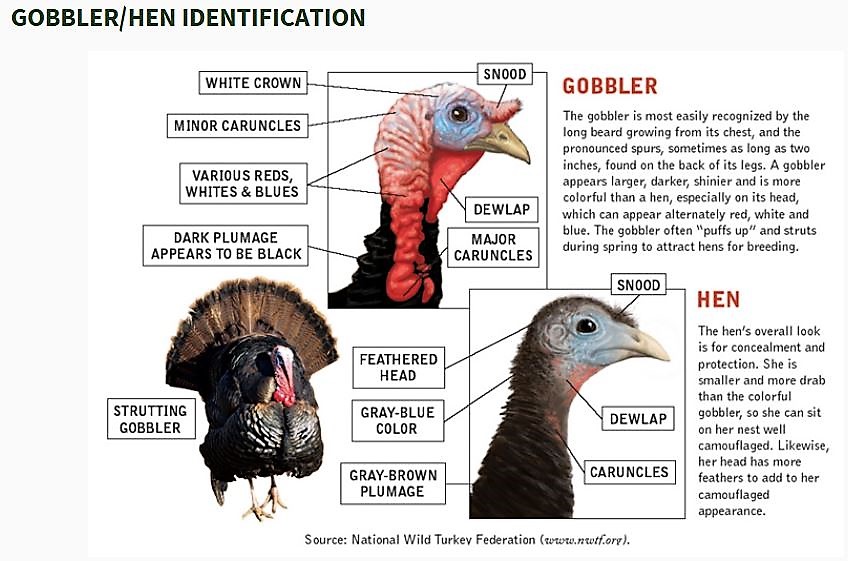- This recipe produces a moist and tender breast that’s absolutely scrumptious.
By Karen Lutto
With spring turkey hunting season kicking into high gear all around the country, successful gobbler getters looking for a delicious new way to prepare their turkey breast should try this Stuffed Smoked Turkey Breast recipe from Hi Mountain Seasonings. It’s easy.
“A lean wild turkey breast can be difficult to prepare without it coming out on the dry side,” said outdoor writer Bob Robb, an accomplished turkey hunter. “That’s why they’re often turned into fried turkey nuggets. This creative recipe from Hi Mountain Seasonings is a game-changer. It produces a moist and tender breast that’s absolutely scrumptious. It’s easy and sure to please family and friends.”
The recipe is centered around two popular Hi Mountain Seasonings products – the Hi Mountain Seasonings Game Bird and Poultry Brine Kit and Hi Mountain Seasonings Rib Rub. The Game Bird and Poultry Brine Kit is a mixture of salt, sugar, brown sugar, sodium nitrite (.85%), maple syrup, caramel color, and less than 2 percent glycerin added to prevent caking. Each brine package contains two packets of the mix, which make one gallon of brine, for a total of two gallons of brine (two brine bags are included), and easy-to-follow instructions. It has a suggested retail price of $9.99. Hi Mountain Seasonings Rib Rub features a blend of paprika, dehydrated garlic, salt, dehydrated onion, honey granules (refinery syrup, honey), black pepper, mustard, silicon dioxide (for anti-caking), cayenne pepper, and soybean oil (refined to be allergen free). It comes in a 10 oz. bottle, with a suggested retail price of $10.99.
Stuffed Smoked Wild Turkey Breast Ingredients:
- 2 skinless wild turkey breasts

- 1 packet Hi Mountain Seasonings Game Bird and Poultry Brine Kit
- Hi Mountain Seasonings Rib Rub
- 1 apple, peeled and cubed
- 1 onion, peeled and cubed
- 4 tbsp butter in four 1-tbsp slices
- Olive oil
Directions:
Brining: In a non-metallic bowl, mix one pouch of Hi Mountain Seasonings Game Bird and Poultry Brine with one gallon of water. Add six cups of ice to the brine. Place the brine bag in a large pot and add the turkey breasts, breast side down, to the brining bag. Pour the brine mixture over the turkey, then place the turkey breasts in the refrigerator to brine for 24 hours.
Roasting: Remove the turkey breasts from the brining bag, rinse under cold, running water, then pat dry with paper towels. Air dry the turkey breasts for at least 30 minutes.
While the turkey breasts are air-drying, cube the peeled apple and onion. Lay the turkey breast flat on a cutting board. With a sharp knife held parallel to the board, cut a pocket into the turkey breast, leaving a section uncut – like a hinge – on the thicker side of the breast. Stuff half of the cubed apple and onion inside the pocket of the first turkey breast and season the mixture with Hi Mountain Seasonings Rib Rub.
Place two 1-tbsp slices of butter on top of the apple/onion cubes inside the turkey breast pocket. Fold the turkey breast over to seal the pocket. Brush both sides of the turkey breast with olive oil, then season all sides of the turkey breast with Hi Mountain Seasonings Rib Rub.
Repeat with the second turkey breast.
Preheat a wood pellet grill that has a smoke/grill option to 200 degrees. Smoke the turkey breasts for 30 minutes. After 30 minutes of smoking, increase the heat to 350 degrees and continue grilling until the turkey reaches an internal temperature of 165 degrees. Remove the turkey breasts from the grill and let them rest for 20 minutes before slicing and serving.
Please note: A meat thermometer is an essential tool for this recipe.
This mouth-watering recipe is just one of the many free recipes found on the Hi Mountain Seasonings website, www.himtnjerky.com. HMS is America’s premier manufacturer of kits for homemade jerky and sausage, Western-style seasonings, bacon cures, snackin’ stick kits, dressings & dips, delicious recipes for meat, fish and fowl, and much, much more. Why not check it out today?
More about Hi Mountain Seasonings: Located in the heart of Wyoming, Hi Mountain Seasonings was founded in 1991 and is America’s premier manufacturer of homemade jerky and sausage kits. Hi Mountain Seasonings has successfully captured distinct, traditional Western flavors in its jerky cure & seasonings, Western-style seasonings, bacon cures, snackin’ stick kits, dressings & dips, and much, much more. The company also offers field dressing and prep and cooking tools. For additional information, write Hi Mountain Seasonings, 1000 College View Drive, Riverton, WY 82501; call toll-free 1-800-829-2285; or visit the company website at www.himtnjerky.com.






